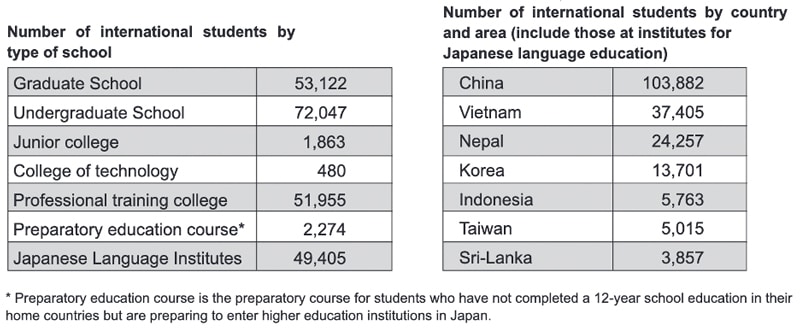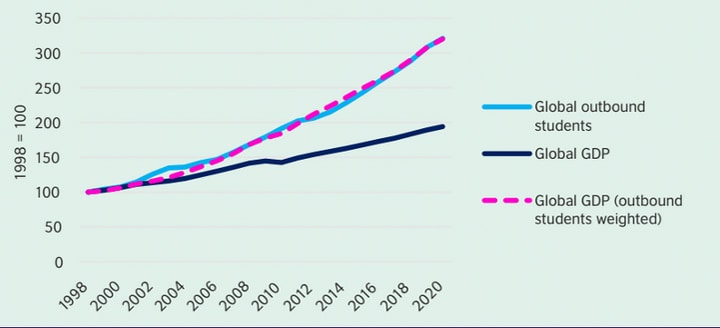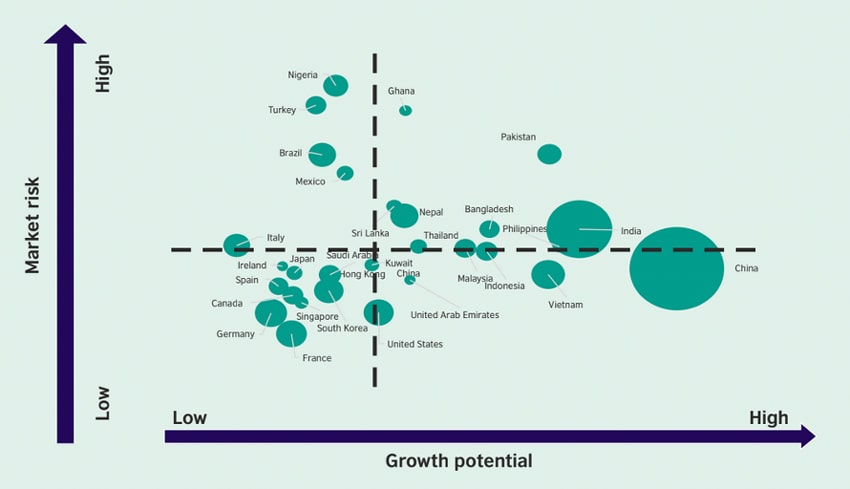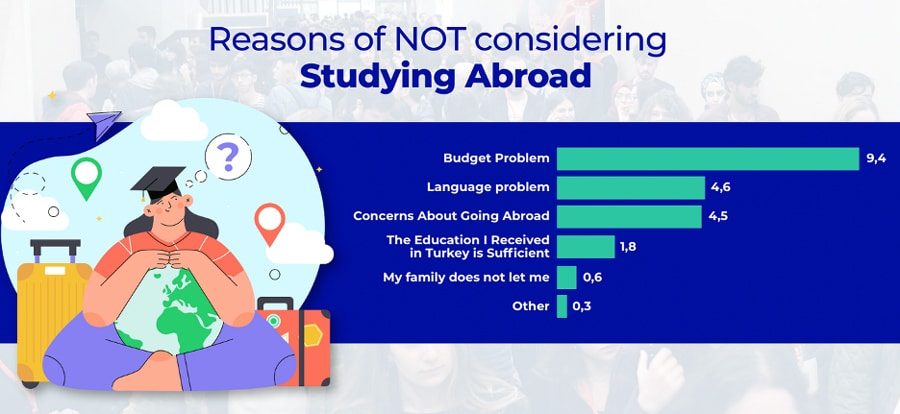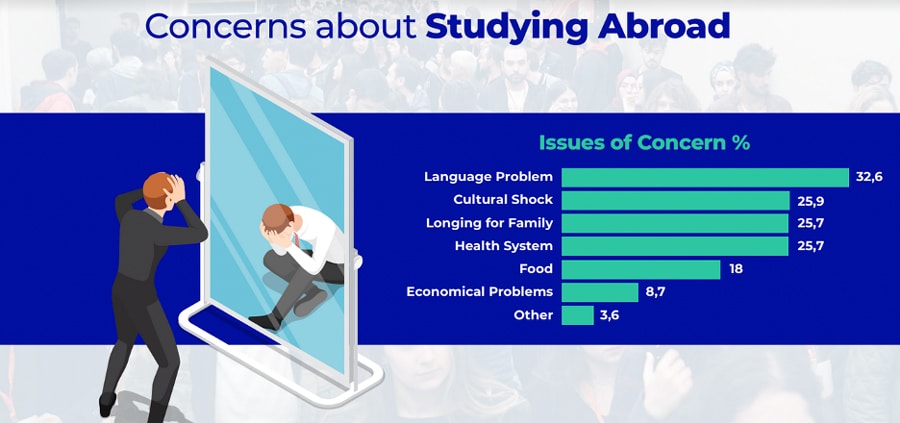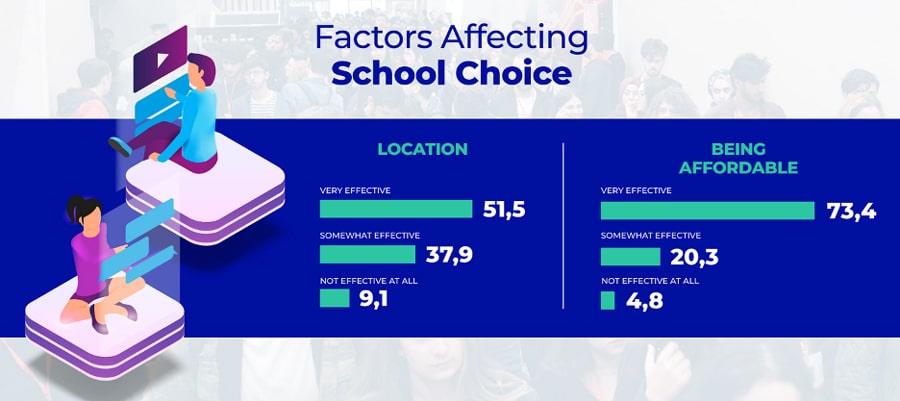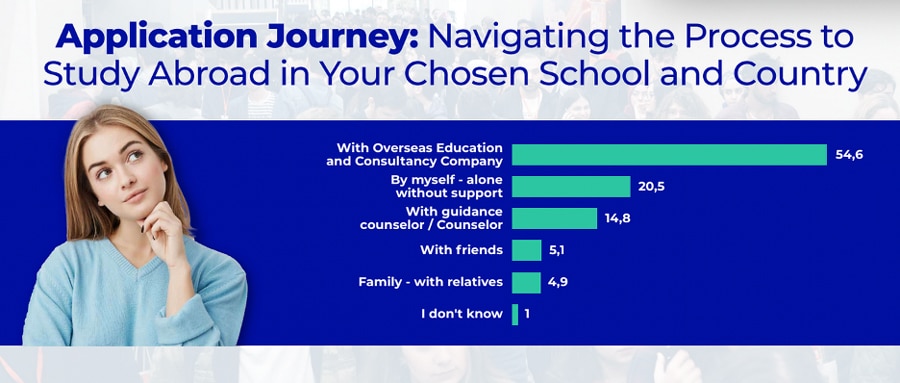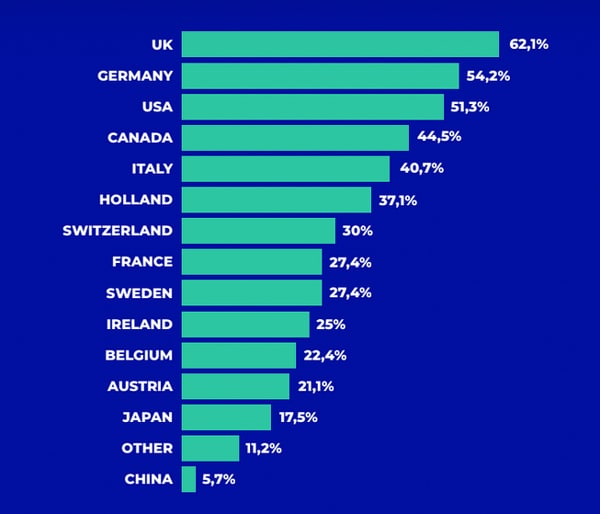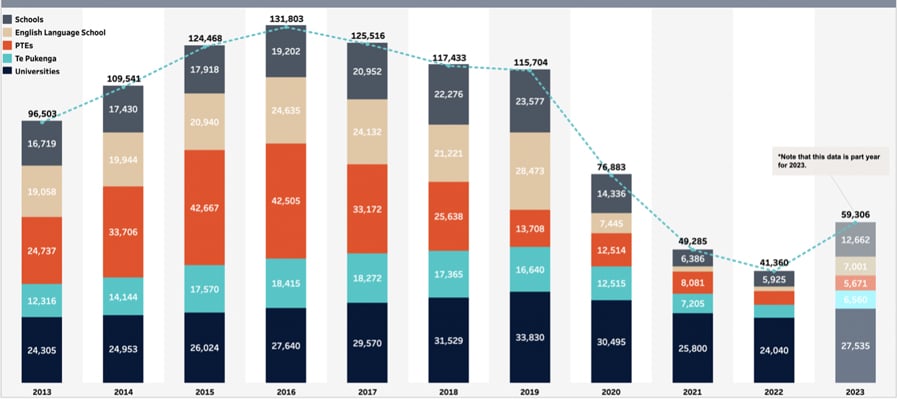Since the Canadian government’s announcement in January that it would be capping the number of new study permits issued to international students in 2024 and 2025 (with the exception of permits for graduate and K-12 programmes), more news associated with the broad cap has trickled in every week or two. We are committed to keeping readers informed of the developing immigration story in Canada given the large proportion of our readership affected in one way or another by changes in Canadian policies around international education.
Nova Scotia joins the list of provinces announcing their study permit application approach
The Canadian government’s cap on new international study permits for 2024 is playing out variously across the country. This is because each Canadian province has been allocated a different share of the total national volume of study permit applications and because each provincial government then decides how to distribute its allocation across its educational sectors and institutions.
Last week we reported on the very different ways in which the provincial governments of British Columbia (BC) and Ontario distributed their allocated study permit applications. The BC government distributed its allocation relatively evenly while in Ontario, public universities and colleges received 96% of the total, leaving language schools and private universities with a mere 4% and private colleges with 0% of the quota.
Nova Scotia was the next province to announce its handling of its study permit application quota, and as in Ontario, universities were heavily favoured in the distribution.
Nova Scotia received an allocation of 12,900 applications for 2024, which is about 7,000 fewer than the total number of applications submitted in 2023. Of that total, 11,565 (90%) will go to the province’s 10 universities and Nova Scotia Community College. Of the remainder, 710 are reserved “for a dozen private career colleges” and 526 are slotted for nine language schools. Another 99 application spaces are left over “to respond to unexpected circumstances and new programs.”
While universities fared the best overall in Nova Scotia’s disbursement of applications, some universities are facing a more difficult year than others as the province also allocated applications on an institution-by-institution level. CBC News reports that “Cape Breton University (CBU) is facing the biggest hit, a 52 per cent decrease to 5,086 applications … Mount Saint Vincent University (MSVU) will have access to 44 per cent fewer, for a total of 860, and Université Ste-Anne faces a 34 per cent cut to 962.”
David Dingwall, CBU’s president, told CBC News that CBU “is facing a major financial problem unless it is able to convince immigration officials to grant more prospective students the permits they apply for” given that the university’s conversion rate is only 30%:
“If the conversion rate doesn’t go up, it’ll be a big hit. If the conversion rate goes up in our favour, we should be OK. But you can’t take that as a given.”
Further grim news for CBU came in the form of its affiliated language centre, Cape Breton Language Centre, receiving only 84 applications. CBU had asked for 500.
Speaking broadly about the distribution of applications across Nova Scotian institutions, the province’s Advanced Education Minister, Brian Wong, said:
“We’ve worked hard trying to make sure that 12,900 number is allocated fairly amongst the institutions. We also wanted to make sure that schools that were ready for some growth got the opportunity to be able to grow.”
That thinking appears to have driven the decision to substantially increase some universities’ application quota. For example, Halifax’s Dalhousie University has been accorded 1,180 applications (+70% compared with 2023/24). St. Francis Xavier University also received a 19% top-up and Acadia University got a 14% boost.
Mr Wong said that he “hopes” all schools will continue to be successful despite the fact that many may see sharp decreases in their revenues if international student numbers (and tuition) decline. He said it will be crucial for schools to recruit good candidates to increase their conversion rates. Saltwire.com reports that for the 2023/24 academic year, Nova Scotian institutions submitted 19,000 study permit applications, only 40% of which were approved. The national approval average was 60% for that year.
As of this writing, the Nova Scotia government is not planning to provide financial assistance to institutions that may face operational crises if their international student enrolments plummet. But opposition party leader Zach Churchill said that might have to change: “The universities only get their money from government or students so the money is going to have to come from somewhere, and losing international students will certainly have a very serious financial impact on these institutions.”
Recapping provincial allocations and PAL status
While details and methods vary, all Canadian provinces have now distributed their allocation of study permit applications for 2024, and all are now also issuing provincial attestation letters (PALs). This means that study permit processing has now resumed for cap-affected students in all provinces.
IRCC has stated previously that it would allocate roughly 606,000 study permit applications across all provinces and territories, with the goal of granting about 360,000 new study permits to commencing students in 2024 (not including those enrolled in K-12 or master’s/doctoral programmes).
Based on provincial disclosures to date, we understand the following allocations are in place for new study permit applications in 2024.
- British Columbia: 83,000
- Alberta: 41,000
- Ontario: 235,000
- Nova Scotia: 12,900
- New Brunswick: 9,400*
- Prince Edward Island: 3,300*
* Estimated based on media reports
The total study permit applications allocated to the six provinces listed above total just under 385,000, meaning that there are a potential 221,000 study permit allocations remaining under the planned cap of 606,000 for provinces that have not reported as yet: Saskatchewan, Manitoba, Quebec, and Newfoundland and Labrador.
IRCC has yet to confirm the allocations otherwise or if the original national cap of 606,000 study permit applications remains in place for 2024.
Post-Graduation Work Permit eligibility will end sooner for students in college partnership programmes
One of the major changes announced by the federal government in January 2024 was that international students enrolling in programmes delivered through a public-college private partnership (PCPP) would no longer be eligible for a Post-Graduation Work Permit (PGWP). The effective date announced for that change had been September 1, 2024, but it has now been moved up.
Canada’s immigration department (IRCC) advises: “International students who begin this type of program on May 15, 2024, or later will not be eligible for a post-graduation work permit when they graduate.” By advancing the date, IRCC has cut off the ability of PCPP-modelled institutions to squeeze in one more recruiting cycle before the elimination of the PGWP eligibility for their students.
However, IRCC notes as well that some graduates of institutions operating under a PCPP model can apply for a different kind of work permit: “For occupations that face a labour shortage in Canada, a graduate could apply for a work permit supported by an employer’s approved labour market impact assessment, for example.” IRCC states that the department “will continue to work with provinces and territories to proactively identify programme that have been affected by the clarification and will update this list as we receive additional information from them.”
For additional background, please see:
Source
